Styrene when treated with HBr produces :
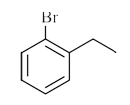



The correct Answer is:B
To solve the question of what product is formed when styrene is treated with HBr, we can follow these steps:
Step 1: Understand the Structure of Styrene
Styrene is an aromatic compound with the formula C8H8. It consists of a benzene ring (C6H5) attached to a vinyl group (C2H3), which can be represented as follows:
- Structure: C6H5-CH=CH2
Step 2: Identify the Reaction Type
When styrene reacts with HBr, it undergoes an electrophilic addition reaction. In this reaction, the double bond in the vinyl group acts as a nucleophile and attacks the electrophile, which is the hydrogen ion (H+) from HBr.
Step 3: Electrophilic Attack
In the presence of HBr:
- The double bond (C=C) donates its electrons to H+, resulting in the formation of a carbocation.
- The bromine (Br) atom becomes negatively charged (Br-).
Step 4: Formation of Carbocation
According to Markovnikov's rule, when HBr adds to an alkene, the hydrogen atom will attach to the carbon with more hydrogen atoms (the less substituted carbon), and the bromine will attach to the carbon with fewer hydrogen atoms (the more substituted carbon). In styrene:
- The carbocation will form at the carbon that is attached to the benzene ring (the more stable position).
Step 5: Attack of Bromide Ion
After the formation of the carbocation, the bromide ion (Br-) will attack the positively charged carbon, leading to the final product.
Step 6: Write the Final Product
The final product formed from this reaction is:
- 1-bromo-1-phenylethane (C6H5-CHBr-CH3)
Conclusion
Thus, when styrene is treated with HBr, it produces 1-bromo-1-phenylethane.
Styrene is an aromatic compound with the formula C8H8. It consists of a benzene ring (C6H5) attached to a vinyl group (C2H3), which can be represented as follows:
- Structure: C6H5-CH=CH2
When styrene reacts with HBr, it undergoes an electrophilic addition reaction. In this reaction, the double bond in the vinyl group acts as a nucleophile and attacks the electrophile, which is the hydrogen ion (H+) from HBr.
In the presence of HBr:
- The double bond (C=C) donates its electrons to H+, resulting in the formation of a carbocation.
- The bromine (Br) atom becomes negatively charged (Br-).
According to Markovnikov's rule, when HBr adds to an alkene, the hydrogen atom will attach to the carbon with more hydrogen atoms (the less substituted carbon), and the bromine will attach to the carbon with fewer hydrogen atoms (the more substituted carbon). In styrene:
- The carbocation will form at the carbon that is attached to the benzene ring (the more stable position).
After the formation of the carbocation, the bromide ion (Br-) will attack the positively charged carbon, leading to the final product.
The final product formed from this reaction is:
- 1-bromo-1-phenylethane (C6H5-CHBr-CH3)
Thus, when styrene is treated with HBr, it produces 1-bromo-1-phenylethane.
Topper's Solved these Questions
Similar Questions
Knowledge Check
- Question 1 - Select One or More
 when treated with conc. H2SO4 and heated produces A. A when treated with base HO− produces B and consequcnt heating produces C : A
when treated with conc. H2SO4 and heated produces A. A when treated with base HO− produces B and consequcnt heating produces C : A B
B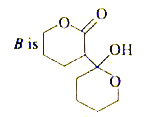 C
C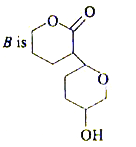 D
D
- Question 2 - Select One
Compound A having molecular formula C7H7NO2 can undergo reduction with Sn + HCl. Treatment of A with KMnO4 gives a compound B (C7H5NO4) which has lower boiling point compared to its other isomer, B when treated with SOCl2 produces C.C when treated with CH2N2 produces D of molecular formula C8H5N3O3 . D when treated with Ag/H2O produces E.
Find out structure of A:A B
B C
C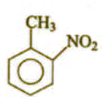 D
D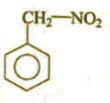
- Question 3 - Select One
Compound A having molecular formula C7H7NO2 can undergo reduction with Sn + HCl. Treatment of A with KMnO4 gives a compound B (C7H5NO4) which has lower boiling point compared to its other isomer, B when treated with SOCl2 produces C.C when treated with CH2N2 produces D of molecular formula C8H5N3O3 . D when treated with Ag/H2O produces E.
Find out structure of C:A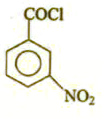 B
B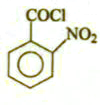 C
C D
D
The ether
 when treated with HI produces View Solution
when treated with HI produces View SolutionAcetylene when treated with dilute HCl at 60∘C(333K) in presence of HgCl2 produces-
View SolutionAssertion:Styrene on reaction with HBr gives 2-bromo-2-phenylethane.
Benzyl radical is more stable than alkyl radical.View Solution1, 1-dimethyl ethylene oxide when treated with water in presence of acid catalyst produces –
View SolutionCompound A having molecular formula C7H7NO2 can undergo reduction with Sn + HCl. Treatment of A with KMnO4 gives a compound B (C7H5NO4) which has lower boiling point compared to its other isomer, B when treated with SOCl2 produces C.C when treated with CH2N2 produces D of molecular formula C8H5N3O3 . D when treated with Ag/H2O produces E.
Find out structure of E :View Solution


 when treated with HI produces:
when treated with HI produces: